Maria Edgeworth (1768-1849) was a highly regarded Anglo-Irish novelist and educator who made significant contributions to the development of the novel in Europe. Her enduring influence on 18th and 19th-century literature solidifies her status as a prominent figure in the literary realm. Renowned for her exceptional storytelling prowess and forward-thinking ideas, Edgeworth fearlessly challenged societal conventions and championed social reform through her literary works. Following, read more about Maria Edgeworth’s life and her contributions.
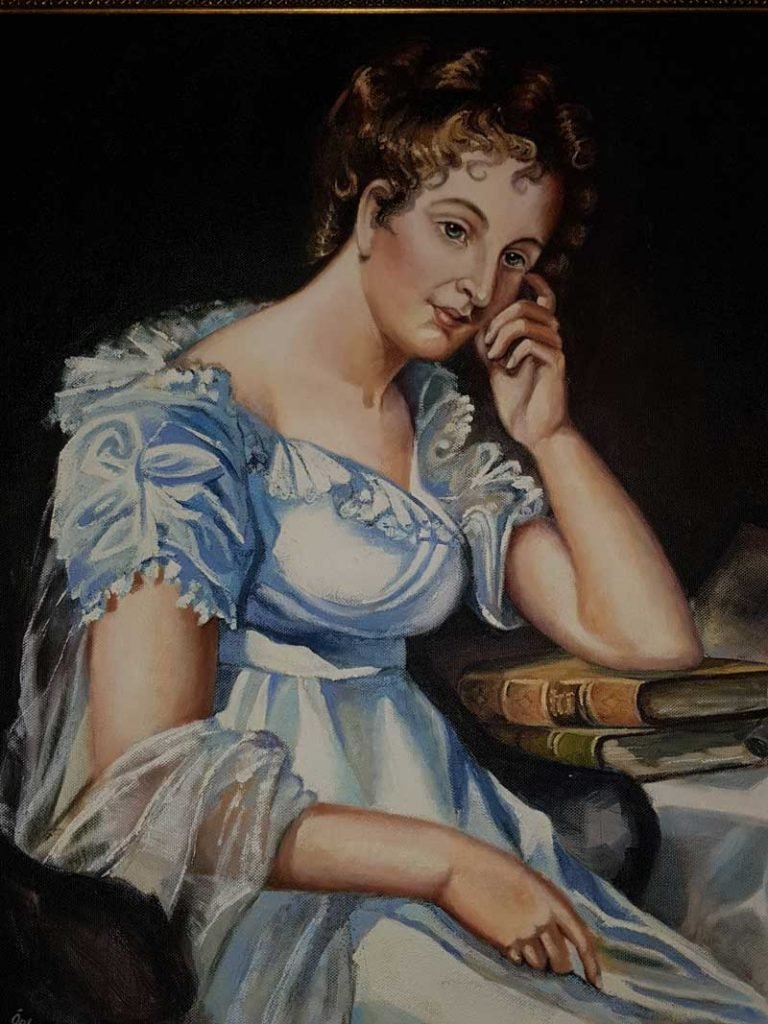
Maria Edgeworth was born on January 1, 1768, in Oxfordshire, England, as the second eldest child of Richard Lovell Edgeworth and Anna Maria Edgeworth (née Elers). Her father, a renowned inventor and writer, cultivated an intellectually stimulating environment that profoundly influenced Maria Edgeworth’s life and upbringing.
During her early years, Maria resided with her mother’s family in England, specifically at The Limes (now known as Edgeworth House) in Northchurch, near Berkhamsted in Hertfordshire. Tragically, the mother passed away in March 1773 when Maria was just five years old.
A mere three months later, her father entered into a second marriage with Honora Sneyd. Apparently, Maria Edgeworth’s early childhood was unhappy, neglected by her father and deemed to be a difficult child. In 1775, after Honora fell ill, Maria was enrolled in Mrs. Lataffiere’s boarding school in Derby. Subsequently, she attended Mrs. Devis’ boarding school in Great Wimpole St, London.
Meanwhile, in the year 1780, Maria’s stepmother sadly passed away too, prompting her father to enter into another marriage. This time his late wife’s sister Elizabeth Sneyd. Unfortunately, Elizabeth’s life would soon also be claimed by consumption in 1797, echoing the fate of her sister.
Richard Lovell Edgeworth’s undivided attention shifted towards Maria, when she faced the imminent threat of losing her eyesight due to a severe eye infection in 1781. From now onwards, he would have a great influence and impact on her life and work.
In 1782, the Edgeworth family permanently settled in Ireland, where they managed their neglected estate at Edgeworthstown.
At the tender age of 14, Maria assumed the role of her father’s assistant, providing support in the day-to-day affairs of estate management and taking charge of her numerous younger siblings.
Richard married once again in 1798. His fourth wife, Frances Beaufort, was the sister of Sir Francis Beaufort, the renowned creator of the Beaufort Wind Scale. Despite being a year younger than Maria, Frances quickly became her lifelong confidante, fostering a deep and enduring bond between the two remarkable women.
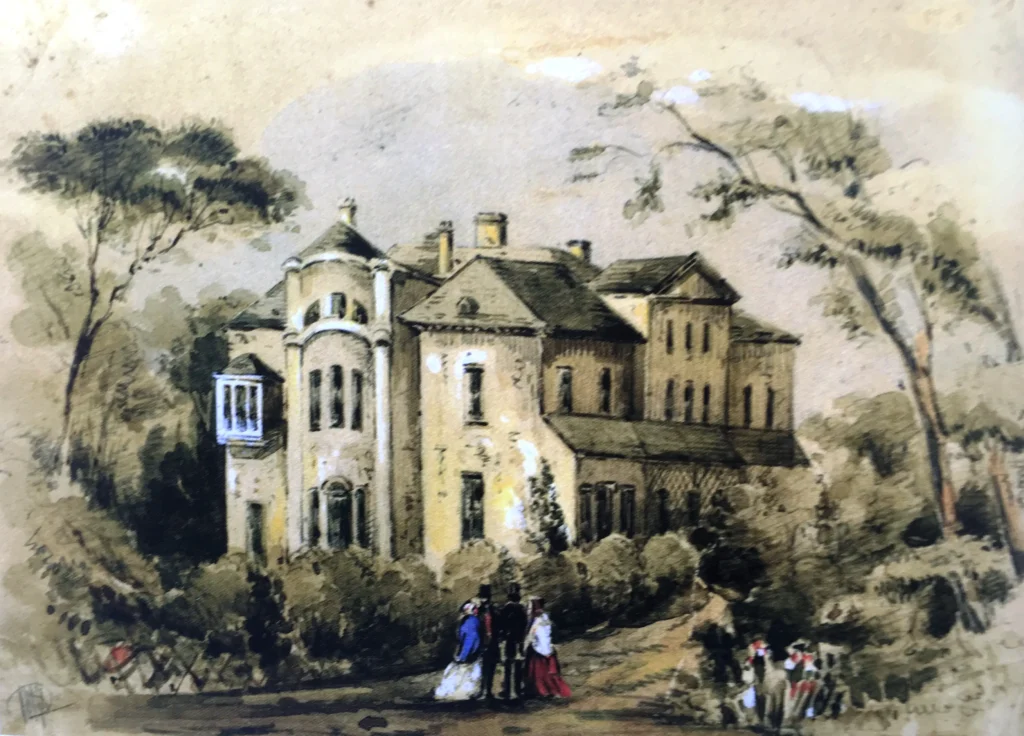
Maria Edgeworth’s education was unconventional for a girl of her time. Her father, Richard Lovell Edgeworth, was a forward-thinking individual who firmly believed in providing his children, regardless of gender, with an equal level of education. As a prolific inventor and writer, he later actively collaborated with Maria on numerous books pertaining to education and various other subjects.
Consequently, Maria’s early education was profoundly shaped by her father’s progressive ideas, exposing her to a diverse array of subjects such as science, mathematics, and philosophy. Growing up amidst a culturally and intellectually vibrant milieu, Maria received a comprehensive education that blended traditional studies with innovative approaches.
Here you can read more about the influence of the Edgeworth family on education.

In time, Frances Beaufort proposed the notion of embarking on a journey to England and the European continent.
During their travels, in Paris, Maria found herself on the receiving end of a most distinguished proposition – a marriage proposal from the Swedish courtier, Count Edelcrantz.
She appeared rather composed about it. However, Maria, apparently, held deep affection for him and did not recover swiftly. Nevertheless, she decided to stay with and care for her family in Edgeworthstown. She never married or had children.
Edgeworth had many correspondents across Britain, Europe, as far as North America and India, including Jane Austen, Sir Walter Scott, Charles Babbage and Rachel Mordecai Lazarus, a Jewish-American educator. As a prolific letter writer, many of these letters are preserved.
Maria Edgeworth embarked on her literary journey during her late teenage years. Over the years she assembled a remarkable repertoire of novels, children’s books, and educational texts.
As one of the pioneering realist writers in children’s literature, she also played a crucial role in the development of the novel in Europe. Her literary contributions garnered widespread readership and admiration, leading to correspondence with esteemed figures in both the literary and economic circles of her era. Notably, she engaged in intellectual exchanges with renowned writers such as Fanny Burney and Jane Austen.
To name but a few of her works:
Maria Edgeworth’s literary career stands as a testament to her profound impact on the literary landscape. Her works not only entertained readers but also challenged societal norms and advocated for positive change. She produced works that tackled themes of social reform, education, and cultural differences.
After her father’s death in 1817, she wrote less frequently. However, she did finish her father’s Memoirs in 1820. Afterwards she mostly dedicated herself to the management of the estate in Edgeworthstown. It is worth noting that she had gained a significant reputation throughout. Some of her works were making more money during her life time than Jane Austen’s.
Richard Lovell Edgeworth and Maria worked tirelessly to enhance the living standards of the underprivileged residents in Edgeworthstown. In her efforts to uplift the village, she established schools that catered to children from all religious backgrounds.
When William Rowan Hamilton was elected as the president of the Royal Irish Academy, Maria Edgeworth emerged as a prominent advisor to Hamilton, particularly in matters concerning literature in Ireland. Hamilton made her an honorary member of the Royal Irish Academy in 1837, in recognition of her invaluable guidance and assistance.
Unfortunately, her final years were marred by the devastating Irish famine of 1846.She dedicated her efforts to helping the famine-stricken Irish peasants during the devastating Great Famine. As part of her contribution, she penned her last book Orlandino, with the intention of raising funds for the Relief Fund.
In her later years, Maria Edgeworth paid a visit to her relatives in Trim. However, it was during this time, in her eighties, that she began experiencing heart pains. Tragically, she succumbed to a sudden heart attack in Edgeworthstown on 22 May 1849 and was buried alongside her father in the family vault in the Churchyard of St. Johns in Edgeworthstown. Leaving behind a legacy of literary brilliance and progressive thinking.
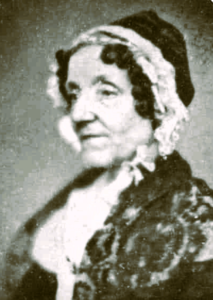
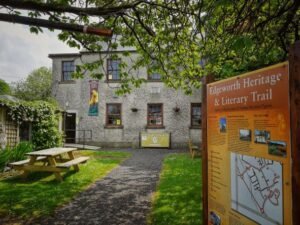

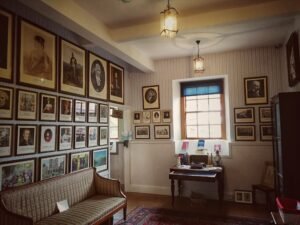
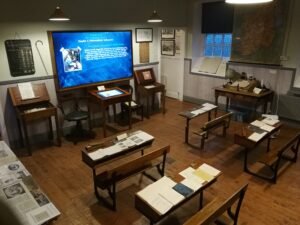

The best way to keep in touch and to be aware of our events
Don’t forget to confirm your subscription in the Email we just sent you!
Please pre-book your visit over Christmas and New Year at least 24h in advance via Email or Online booking.
MondayClosed
Tuesday10:00 AM - 5:00 PM
Wednesday10:00 AM - 5:00 PM
Thursday10:00 AM - 5:00 PM
Friday10:00 AM - 5:00 PM
Saturday11:00 AM - 5:00 PM
Sunday11:00 AM - 5:00 PM
Adult €7.50
Children 10 to 16 €3
2 Adults & 2 Children €15
Adult is 16 years+
Family Ticket is 4 family members together
Children under ten are free but must be accompanied by an Adult

This project was assisted by Longford Local Community Development Committee, Longford Community Resources Clg. and Longford County Council through the LEADER Programme 2023 -2027 which is part-financed by the EU, “The European Agricultural Fund for Rural Development: Europe investing in rural areas” and the Department of Rural & Community Development
The Maria Edgeworth Centre is operated under the direction of the Edgeworthstown District Development Association (EDDA) – a Not for Profit Voluntary Community based registered charity Reg:223373. Registered Charity Number 20101916
© 2023 Maria Edgeworth Centre – All Rights Reserved